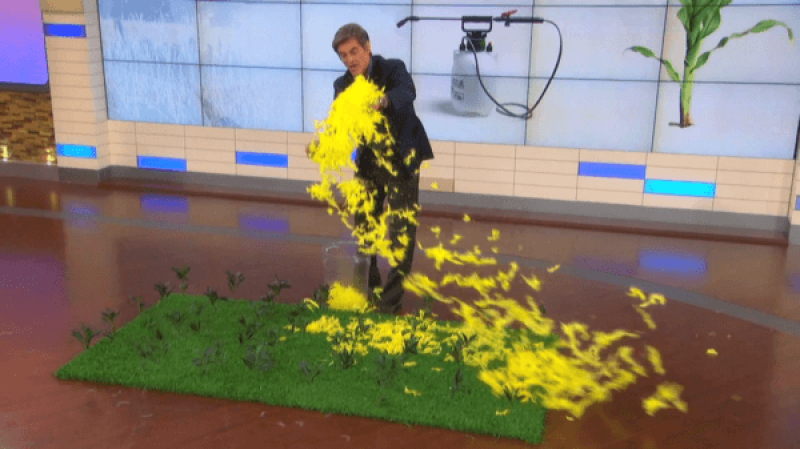Andrew Kniss, a scientist with an expertise in pesticides and weed control, addressed a segment on the Dr. Oz show in which he blows feathers all over the stage to try to scare consumers about the alleged dangers of pesticide drift.
Although this is a powerful visual demonstration, it grossly misrepresents the actual amount of off-target pesticide movement that we would expect when crop fields are sprayed. And we know this because there is a large (and continually growing) body of research on this very topic.
I recently addressed one aspect of off-target pesticide movement in response to an EWG report. In a nutshell I concluded that:
…even if [a] 20 kg child ran around in the sprayed field continuously for 24 straight hours, they would only be exposed to a maximum of 0.0097 mg/day, 14 times less than what would be considered safe using EWG’s proposed standard. So even if we assume very high estimates of air concentration, assume very high breathing rates of children, assume a very small child, assume unrealistically high exposure time, and assume an unrealistically close proximity between the child and the treated area, there is nothing to indicate the children would be exposed to unsafe concentrations of the herbicide. If we use more realistic values for each step (proximity, concentrations, breathing rates), the chronic exposure would be almost negligible.
In his recent comments to the Senate panel, Dr. Oz said: “When we write a script, we need to generate enthusiasm and engage the viewer.”
It seems to me, that those goals shouldn’t preclude also being accurate.
Read full original article: Dear Dr. Oz: We Don’t Spray Feathers































